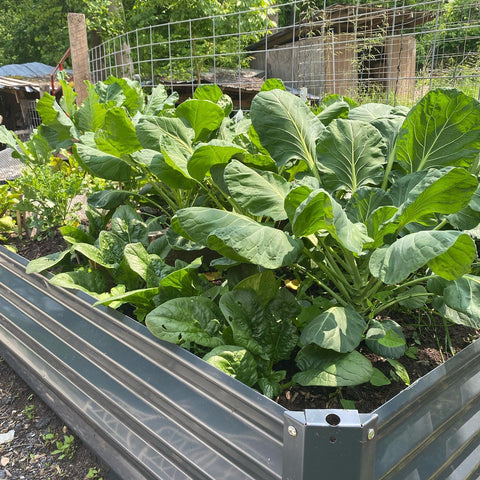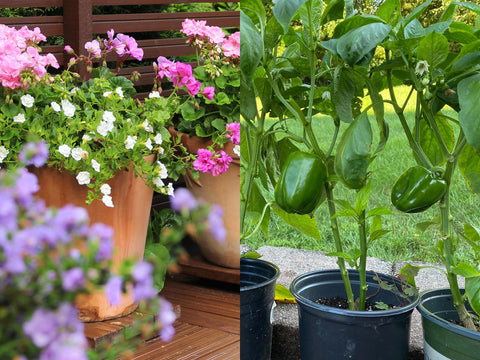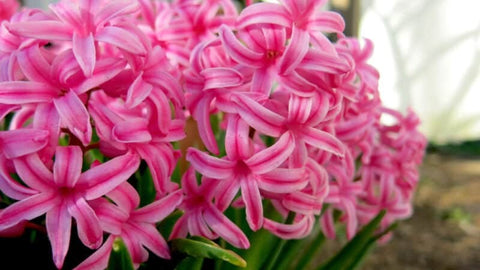As winter blankets the garden in a serene hush, the avid gardener's mind begins to stir with dreams of vibrant blooms, lush foliage, and the promise of a bountiful harvest. January marks the starting point of the gardening calendar, and what better way to usher in the new year than by immersing yourself in the enchanting world of seed catalogs? In this blog, we'll explore the art of garden planning during January, providing tips and insights to turn your garden dreams into a well-thought-out reality.The following content also has some reference value for raised garden beds.

1. Reflecting on the Previous Year
January is the perfect time to take a leisurely stroll down memory lane and reflect on the successes and challenges of the previous gardening season. Consider the following aspects:
Evaluate Past Harvests:
- Reflect on the fruits, vegetables, and flowers that thrived in your garden.
- Identify any challenges or issues faced during the previous season.
Assess Garden Design:
- Review the layout and design of your garden beds.
- Think about any alterations or enhancements you would like to make.
Documenting Favorites:
- Note the plants that stood out as favorites.
- Record varieties that may require adjustments or replacements.
2. Organizing Your Garden Space
Before the growing season kicks into full gear, take the opportunity to organize and prepare your garden space for the coming months.
Cleaning and Clearing:
- Remove debris, weeds, and any lingering plant material.
- Prepare the soil by incorporating compost and organic matter.
Check Garden Tools:
- Inspect and clean your gardening
- Make a list of any tools that need repair or replacement.
Plan for Garden Structures:
- Evaluate the need for additional structures like trellises, supports, or raised beds.
- Consider any changes to pathways or seating areas.
3. Embracing the Seed Catalog Experience
January is synonymous with the arrival of seed catalogs, offering a delightful escape into a world of possibilities. Here's how to make the most of this inspiring experience:
Curate Your Collection:
- Gather a selection of seed catalogs from reputable suppliers.
- Create a dedicated space for perusing and organizing your catalogs.
Explore New Varieties:
- Venture beyond your usual choices and explore new and exciting plant varieties.
- Look for plants that thrive in your specific climate and growing conditions.
Take Notes and Make Lists:
- Jot down notes on plant descriptions, growth habits, and special features.
- Create lists based on categories like vegetables, flowers, or herbs.
4. Strategic Plant Selection
January is the opportune time to make informed decisions about the plants you want to grow. Consider the following factors when selecting seeds:
Consider Climate and Zone:
- Choose plants that are well-suited to your specific climate and hardiness zone.
- Check the seed catalog for information on recommended zones.
Succession Planting:
- Plan for succession planting to ensure a continuous harvest throughout the growing season.
- Select varieties with different maturity dates for staggered harvests.
Companion Planting:
- Explore the concept of companion planting to maximize the health and productivity of your garden.
- Choose plants that complement each other in terms of growth habits and pest resistance.

5. Creating a Planting Calendar
A planting calendar is a valuable tool that ensures you stay organized and on track throughout the growing season.
Utilize a Calendar or Planner:
- Use a calendar or gardening planner to map out key planting dates.
- Mark the last expected frost date and calculate planting dates accordingly.
Crop Rotation Planning:
- Incorporate crop rotation strategies to maintain soil health and prevent disease.
- Plan the placement of plants based on their families and previous locations.
Indoor Seed Starting:
- Determine the optimal time for starting seeds
- Create a schedule for indoor seed starting based on your region's climate.
6. Seed Storage and Organization
Proper seed storage and organization are essential for a smooth planting process.
Check Seed Viability:
- Assess the viability of stored seeds from previous seasons.
- Conduct germination tests if unsure about the seed's potency.
Organize by Planting Date:
- Organize your seeds by their respective planting dates.
- Label containers or envelopes with clear information on seed type and variety.
Create a Seed Inventory:
- Take stock of your current seed
- Identify any gaps and make a list of seeds to purchase.
7. Educate Yourself and Seek Inspiration
January provides an excellent opportunity to expand your gardening knowledge and find inspiration for the upcoming season.
Read Gardening Books and Blogs:
- Dive into gardening books and blogs to gain insights into new techniques and trends.
- Explore topics related to soil health, companion planting, and sustainable gardening.
Attend Virtual Workshops or Webinars:
- Participate in virtual gardening workshops or webinars.
- Connect with experienced gardeners and experts to enhance your skills.
Join Gardening Communities:
- Join online gardening communities or forums to share experiences and seek advice.
- Engage in discussions about specific plants, techniques, and challenges.

Conclusion
January is not just a month of dormancy; it's a canvas waiting to be painted with the colors of your garden dreams. By reflecting on the past, organizing your space, immersing yourself in seed catalogs, and strategically planning your garden, you set the stage for a season of growth, beauty, and abundance. So, let the seeds of imagination take root in the fertile soil of your plans, and as you leaf through the seed catalogs, envision the kaleidoscope of blossoms and the harvest that awaits. With thoughtful planning and a touch of garden magic, January becomes the gateway to a year of horticultural delight and the fulfillment of your garden dreams.









